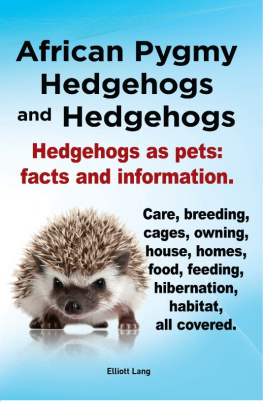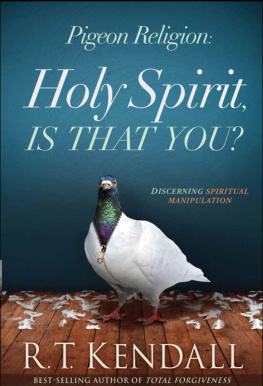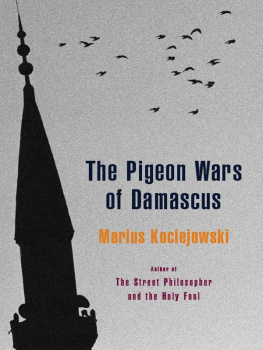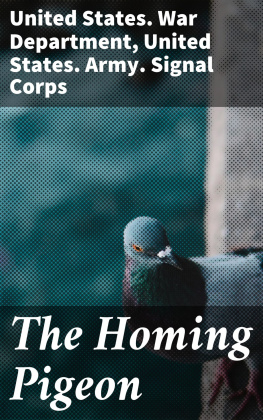Pigeon Passion
The Complete Pigeonand Racing Pigeon Guide
The Must-Have Guide For ANYONE Passionate AboutKeeping, Breeding Or Racing Pigeons
By
Elliott Lang
~~~
Smashwords Edition
Published by IMB Publishing
2013 IMB Publishing
All rights reserved. No part of this publication maybe reproduced, stored in a retrieval system or transmitted, in anyform or by any means, electronic, mechanical, photocopying,recording or otherwise without the prior permission of thecopyright owner.
A catalogue record of this book is available at theBritish Library.
Smashwords Edition, License Notes
This ebook is licensed for your personal enjoymentonly. This ebook may not be re-sold or given away to other people.If you would like to share this book with another person, pleasepurchase an additional copy for each recipient. If youre readingthis book and did not purchase it, or it was not purchased for youruse only, then please return to Smashwords.com andpurchase your own copy. Thank you for respecting the hard work ofthis author.
With thanks to my dad for teaching me all aboutpigeons.
And thanks to my wife and kids for sticking with methroughout the many hours I spent writing this book.
Contents
Introduction

Humanity's relationship with pigeons has beenrecorded throughout history, in myth, folklore, fact and legend.Whether it's the Biblical image of Noah being led to shore by apigeon or the lifesaving messages the birds carried during everywar, we all should be humbled by man's true best friend.
From there the practice of pigeons hasmessengers evolved into racing, pushing it to become a worldwidesport with large amounts of money being made from race prizes andbetting. Pigeons are cultivated all over the world for theirbeauty, their will to survive, their tenacity, their speed andtheir endurance.
The pigeon is the only bird that hasdeveloped such close links with humanity and been useful in so manyways. From time immemorial, the pigeon has served as symbol,sacrifice, food and messenger. It has also played a role as baitand decoy in falconry and thousands died in nineteenth centuryshooting matches.
Some of the pigeon's illustrious history hasbeen obscured by the confusion between the terms pigeon anddove. Usually, dove is traditionally used in the contexts ofreligion, literature and art and pigeon for sport and cooking.Historically, the dove has been associated with motherhood andfemininity. The Sumerian goddess Ishtar was often depicted holdinga pigeon and the ancient Phoenicians associated Astarte, thegoddess of love and fertility, with the dove. The Greek goddessAphrodite and the Roman goddess Venus were also symbolised bydoves.
Both Noah's dove and the New Testament doveof the Holy Spirit are the ancestors of todays urban pigeons.Noah's story is echoed in the Babylonian Epic of Gilgameshthat includes a story about a great flood and a pigeon playing therole of a messenger.
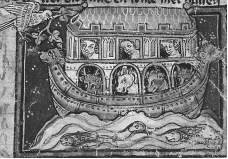
Noah's story makes it clear that he wasfamiliar with the birds homing ability. The symbol of the dovecarrying an olive branch and bringing its message of hope and peacestill endures today.
The pigeon is descended from the blue rockpigeon, found in the wild everywhere in the world except at thepolar icecaps. It makes its home on cliffs, but has always had atendency to nest around human dwellings. People have bred thecommon pigeon for almost four thousand years. The earliest recordsof pigeon keeping date from around 2,600 BC, during the fourthEgyptian dynasty, and pigeons can be seen in a number of paintingsand hieroglyphics. The Egyptians would release pigeons in order toannounce the rise of a new pharaoh.
At first, pigeons were bred in small dovecotes, and later in large structures called columbarium.Hundreds of ancient columbaria have been found in Israel, somelarge enough to have contained thousands of pigeons.
In the distant past, using pigeons was thefastest way to send messages. Trained by the Egyptians andPersians, messenger pigeons spread across the civilised world.Pigeons were at the heart of a great network of communication thatkept rulers in touch with the most remote areas of their domain ata time when a horse and rider would have taken weeks to deliver thesame information. Phoenician merchants used to take pigeons ontheir ships and let them go whenever they needed to releaseinformation about their business. China organised a postal systembased on the use of messenger pigeons and the Greeks used homingpigeons to send news of Olympic victories. In eighth centuryFrance, only the nobles had homing pigeons and the birds wereconsidered a symbol of power and prestige until the Frenchrevolution.
One of the earliest tame pigeons belonged tothe Greek poet Anacreon in the sixth century BC. He wrote a poemdescribing how his pigeon carried a love letter for him, drank fromhis cup, ate from his hand, flew around the house and slept on hislyre. Later, in the first century BC, the Jewish philosopher Philonoted on a visit to Ascalon that the pigeon had become very boldand impudent on the domestic scene.
Many societies saw pigeons as a cheap sourceof good meat, especially during the winter when larger animals wereunavailable as a food source. The Romans force fed squabs to fattenthem up and wealthy landowners often had pigeon houses. Pigeonswere also used as a source of high grade nitrogen (droppings) forfields.
In the nineteenth century, Julius Reuterfounded the news service that still carries his name as a line ofpigeon posts.
From the time of the ancient Greeks, armieshave carried pigeons ready to send news to headquarters. When Pariswas seized during the Franco-Prussian war of 1870-1, hot airballoons were used to carry baskets of homing pigeons and otherletters out of the city. The pigeons were used to send messagesback and, owing to the advent of micro photography, as many as30,000 messages could be carried by a single bird. During the fourmonth siege of Paris, four hundred birds delivered nearly 115,000government messages and about a million private messages.
In 1914 when World War I broke out, the armedforces began to use pigeons in their war communications. At thistime, the telegraph was the common method for communicating, buttelegraph wires were easily cut in two or tapped into by enemyforces. Portable pigeon lofts accompanied soldiers to the front sothat they could send messages almost instantly. The BritishIntelligence Service used pigeons as a way of maintaining contactwith sympathisers and resistance movements in enemy occupiedterritory and the Germans had photographer pigeons with camerasstrapped to their bellies.
Batches of pigeons, with their own bodyharness and parachute, were jettisoned from airplanes and releasedby a clockwork mechanism. Although a large number perished, ninetyfive per cent of the birds released returned with essentialmessages. Over half a million birds were used by the warring armiesas reliable communication.
One of the most famous pigeon stories of thistime is that of the lost battalion in France that was saved by apigeon named Cher Ami. The battalion was being shelled andwounded by friendly fire because they advanced too far into enemyterritory. Several birds were released and when Cher Ami tookflight, the German soldiers fired at the bird and wounded it. Itarrived back at the command post twenty five miles away with oneeye shot out, a bullet in its breast and the leg that carried themessage capsule hanging on only by a tendon. The battalion waslater saved and Cher Ami received a Croix de Guerre and was takenback to America where he lived until 1919. He was later mounted andthen placed on display in the Smithsonian Institute.


